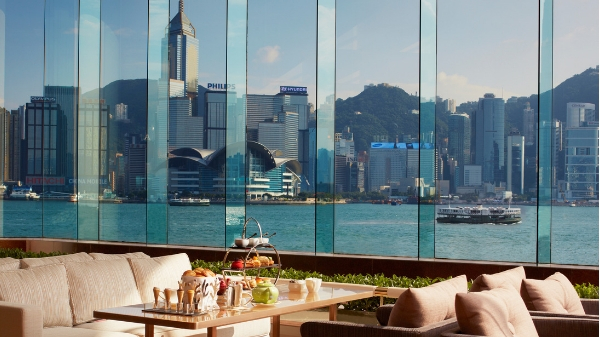
How Hong Kong’s love of afternoon tea stems from a bloody 19th-century conflict
What truly defines Hong Kong? As a clue, it’s not finance, food or even fashion. Indeed, if contemporary Hong Kong has been shaped by anything, it’s tea. Hongkongers, of course, love every manifestation of their favourite brew, be it the more homely street-side bubble variety or the posher five-star-hotel afternoon incarnation. This is perhaps a reflection of just how deep-rooted the city’s entanglement with tea actually is, with the (Brooke) bonds in question dating back several centuries.

Tea-ing off…
As with so many local traditions, it all started with the British, those quintessential lovers of all things tea. Surprisingly, while tea was a China-wide tipple some 2,000 years ago, it took the Brits a further 1,700 years to cotton on, with the Sceptred Isle not getting its first cuppa till the 17th century, courtesy of the East India Company (EIC), one of the world’s first true conglomerates. Quickly securing royal endorsement, Catherine of Braganza, the wife of King Charles II, championed its adoption by the aristocracy of the day, ensuring it was soon both a coveted and costly commodity.
As to how we get from a Stuart monarch’s preferred bevvy to the forming of a habit across Hong Kong, well, that’s again down to the EIC. Swift to realise the profit potential of the tea trade, it was soon buying up China’s surplus stocks by the barrel load. The sheer scale of this operation, however, soon led to a massive trade imbalance in China’s favour, with Britain having little on offer that mainlanders wished to acquire. In a bid to restore balance, the EIC began cultivating tea in India’s Darjeeling and Assam regions, with the superior flavours of these varieties soon ousting the China-grown alternative from the affections of the discerning English folk. This, though, didn’t suffice to stem the EIC’s commercial aspirations and it soon set about clandestinely importing India-sourced opium to China.
These illicit narcotics swiftly drained China’s national coffers, leading to the bloody Opium Wars. Ultimately defeated, China was then obliged to sign an agreement in 1842 ceding Hong Kong to the British Empire. And so it remained until 1997, when it finally returned to the motherland, bringing with it a ragbag of British legacies, including an insatiable love for tea.

A time for tea
One of the most pervasive of all such traditions is the enduring popularity of afternoon tea. Indeed, it would be a hardy Hongkonger who could decline a cuppa and sweet treats in the afternoon. In fact, this particular ritual has become so ubiquitous that the ceremonial serving of afternoon tea remains a staple of hotel hospitality across the city, with pretty much every establishment – from The Ritz-Carlton to The Rosewood –offering its own take. In fact, so fond are Hongkongers of this particular pre-handover hangover that queuing for seats at some of the more favoured venues begins up to an hour before afternoon tea is served. One particularly popular destination is The Peninsula, the city’s oldest hotel. Indeed, according to Florian Trento, the hotel’s group executive chef, it was this very hotel that hosted Hong Kong’s first-ever afternoon tea event. Says he: “After The Peninsula opened in 1928, its tea lounge quickly became the place to meet and be seen. While we’re not sure as to exactly when afternoon tea was first served here, we do know the hotel was offering it well before anyone else in Hong Kong.” Inevitably, its pioneering approach played a major role in establishing the hotel as the locale of choice for the glamorous high society of Hong Kong.

Stirrings across Hong Kong…
Over the ensuing decades, while the city has gone through a series of transformations, Hong Kong’s love of tea has persisted and, indeed, evolved. Today, it is not uncommon for leading interior designers, renowned lifestyle brands and eminent dessert chefs and chocolatiers to collaborate with upmarket hotels and restaurants to create new afternoon tea offerings.
Accordingly, The Ritz-Carlton recently collaborated with Italian haute couture brand Giuseppe Zanotti to concoct an exquisite afternoon tea offering to celebrate the marque’s FW19 collection. Similarly, the InterContinental Hong Kong worked with the French skincare brand Caudalie on the creation of its Anti-oxidant Afternoon Tea, which is available until the end of this month. Meanwhile, The Murray also hosted a pet-friendly afternoon tea set, Paws for Tea, especially for dog owners and their furry friends. While such innovations have a ready market, there are some true classics that are also keenly sought out. The Big Three here would have to be the Mandarin Oriental’s Opera Cake, the special blue flower tea available only at The Conrad and the Wedgewood speciality teas that come courtesy of The Langham Hong Kong. So, let’s tea off in style, we say!
Text: Suchetana Mukhopadhyay
Photos: The InterContinental Hong Kong, The Murray, The Peninsula







